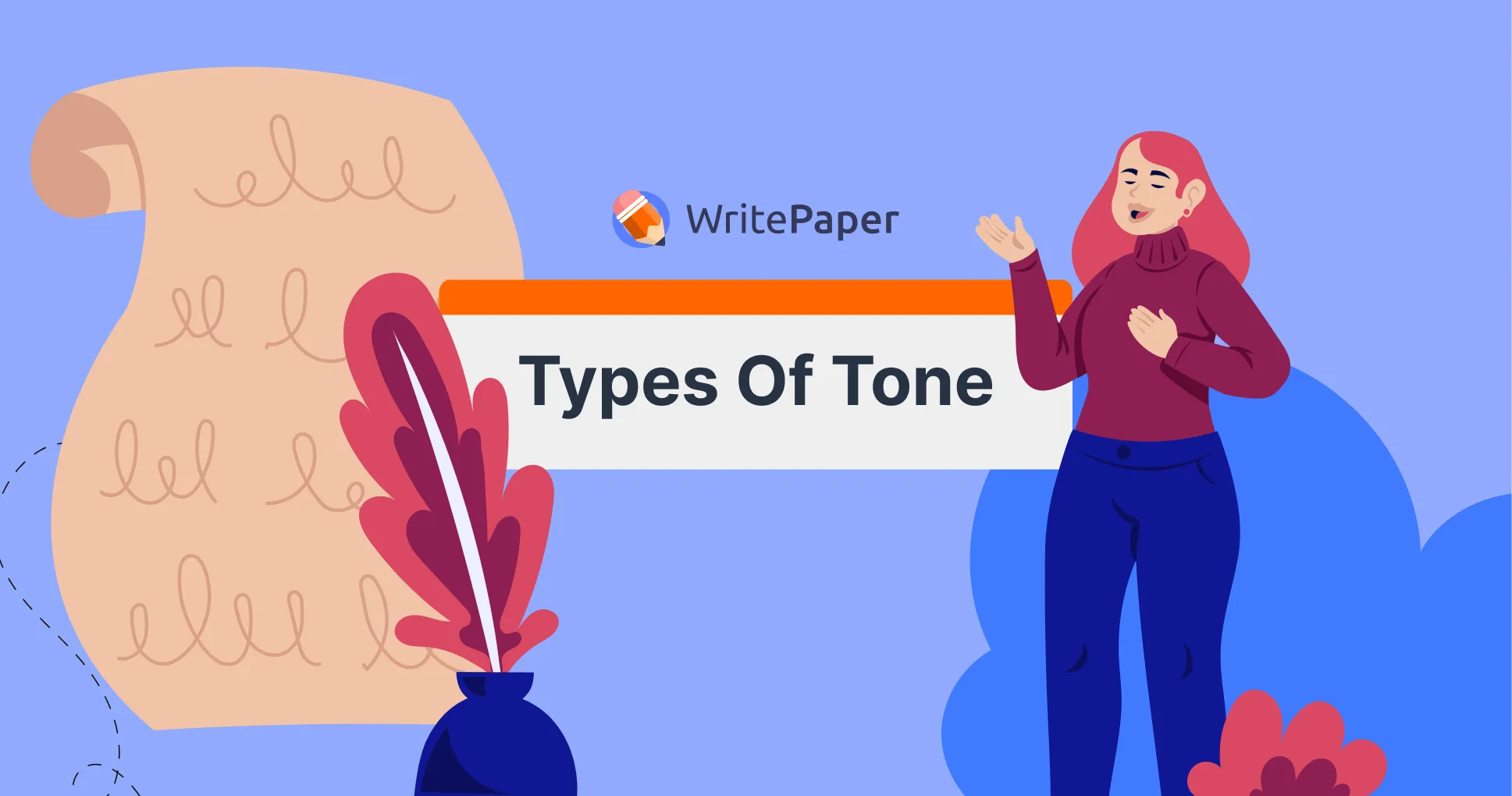Think of a book report outline as a roadmap for students to organize their thoughts and analysis before delving into the writing process. Essentially, it's a structured plan that outlines key elements of a book, including its plot, characters, themes, and the student's interpretation and evaluation of these aspects. By breaking down the components of the book in an outline format, students can systematically approach their analysis, ensuring coherence and depth in their final report. This organization helps students stay focused and on track and facilitates a deeper understanding of the material as they critically engage with it during the outlining process. You can ask an online paper writer to assist you with this assignment.
For several reasons, understanding how to create a book report outline is crucial for students. Firstly, it fosters critical thinking skills by prompting students to identify and analyze the most significant aspects of the book they're studying. Through this process, students learn to discern important themes, character motivations, and narrative structures, honing their ability to interpret and evaluate literature effectively. Secondly, mastering outlining enhances students' writing skills by providing a clear framework for their reports. By having a well-organized outline, students can articulate their thoughts more cohesively, resulting in a more coherent and compelling final product. If you are low on time or deadlines are too short, simply say, ‘write my book report for me,’ and our experts will help you quickly. As for now, let’s explore how to produce a quality book report without wasting too much time.
Need Help with Your Book Report Outline?
Use our expert writing service to get the job done fast.

How to Write a Book Report Outline?
Writing a book report outline can be broken down into several key steps to ensure a comprehensive and organized analysis. Here's a step-by-step guide on how to create an effective book report outline:
- Read the Book Thoroughly
Approach the text with a critical eye, taking note of significant passages, character interactions, and narrative arcs. Pay attention to the author's writing style, tone, and any recurring themes or motifs. Consider how the book fits within its genre and historical or cultural context, as this will inform your analysis.
- Identify the Key Elements
Break down your outline into subsections, ensuring that each part contributes to a comprehensive understanding of the book. Consider including sections for background information, plot summary, character analysis, thematic exploration, and personal reflections.
- Introduction
Begin your introduction with a hook to grab the reader's attention, such as an intriguing fact about the author or an engaging quotation from the book. Provide context about the book, including its title, author, genre, and publication date. Briefly summarize the main premise and central themes, giving readers a sense of what to expect in your report. Consult our guide on how to start a book report or how to write book title in essay for more practical tips.
- Summary
When summarizing the plot, focus on the main storyline while avoiding unnecessary detail. Highlight the inciting incident, rising action, climax, and resolution, ensuring that each plot point is presented logically. Consider incorporating quotes or examples from the text to illustrate key moments and support your analysis.
- Character Analysis
In your book report outline, dive deep into the characters' personalities, motivations, and relationships. Discuss how each character evolves throughout the story, including any internal conflicts or external challenges they face. Analyze the author's characterization techniques, such as direct and indirect characterization, and how they contribute to the overall narrative.
- Themes and Literary Devices
Explore the major themes and motifs present in the book, considering how they are developed and reinforced throughout the narrative. Identify literary devices such as symbolism, foreshadowing, irony, and allegory, and discuss their significance in conveying deeper layers of meaning. Use textual evidence to support your analysis and draw connections between the author's craft and the thematic content.
- Evaluation and Conclusion
Offer your critical assessment of the book, highlighting its strengths and weaknesses. Reflect on what aspects of the book resonated with you personally and how it compares to other works within its genre or literary tradition. Consider the book's broader cultural or social impact and discuss its relevance in today's context. Conclude with a thought-provoking statement that leaves readers with a lasting impression. Remember that our report writing services deliver 100% submission-ready papers written in strict accordance with your instructions.
.png)
Formatting and Proofreading
When it comes to formatting your book report outline, consistency and clarity are paramount. Begin by selecting a clear and readable font, such as Times New Roman or Arial, and use a standard font size, typically 12 points. Ensure your text is double-spaced to enhance readability and leave ample space for annotations or revisions.
To structure your outline effectively, you can use an essay outline generator to kickstart your framework and then refine it with clear headings and subheadings that delineate different sections of your report. For instance, use "Introduction," "Summary," "Character Analysis," "Themes and Literary Devices," and "Conclusion" as main headings, with subheadings under each section to further organize your thoughts. Bullet points or numbered lists can also help break down complex ideas and make your outline more visually appealing.
Proofreading is a critical step in the outline creation to ensure clarity, coherence, and accuracy in your writing. Start by reviewing each section of your outline carefully, checking for spelling errors, grammatical mistakes, and typographical inconsistencies. Pay attention to punctuation, capitalization, and sentence structure to ensure clarity and precision in your expression. Don’t you think you can produce such an assignment on time without our help? Then simply say, ‘do my report,’ and one of our writers will start working on your task in several minutes!
Don’t Think You’ll Be Able to Finish a Book Report on Time?
One of our professional writers could tackle the task for you quickly.

Book Report Outline Examples
Consulting book report outline examples is as crucial for students as checking out entertaining speech topics because it provides them with valuable guidance and inspiration for structuring their reports effectively. By examining examples, students can gain insights into different approaches to organizing their analysis, including how to sequence their ideas, what elements to include, and how to present their arguments coherently. Moreover, exposure to diverse examples exposes students to various writing styles and formats, helping them develop critical thinking, analysis, and communication skills. We’ve prepared two great book report outline examples for your inspiration:
Book Report Outline Example 1: “To Kill a Mockingbird" by Harper Lee
Introduction
- Brief overview of the book.
- Thesis statement: The novel explores themes of racial injustice, moral growth, and the loss of innocence through the experiences of Scout Finch and her family in the fictional town of Maycomb, Alabama.
Summary of Plot
- Setting: Maycomb, Alabama, during the Great Depression.
- Main characters: Scout Finch, Atticus Finch, Jem Finch, Boo Radley, Tom Robinson
- Brief summary of key events, including:
- Introduction to the Finch family and their neighbors.
- Atticus's decision to defend Tom Robinson, a black man accused of raping a white woman.
- Scout and Jem's encounters with Boo Radley.
- Tom Robinson's trial and its aftermath.
Analysis of Themes
- Racial injustice
- Examination of the deep-seated racism present in Maycomb society.
- Atticus's moral stance against racism and his efforts to impart this to his children.
- Moral growth
- Scout and Jem's evolving understanding of fairness, empathy, and courage.
- Atticus's role as a moral compass and the lessons he teaches his children.
- Loss of innocence
- Scout's gradual realization of the harsh realities of prejudice and injustice.
- Jem's loss of innocence as he witnesses the flaws in the justice system and the cruelty of society.
Character Analysis
- Scout Finch
- Description of Scout as the narrator and protagonist.
- Exploration of Scout's development from a naive child to a more empathetic and understanding individual.
- Atticus Finch
- Analysis of Atticus as a moral figure and a symbol of integrity.
- Examination of Atticus's parenting style and its impact on Scout and Jem.
- Boo Radley
- Discussion of Boo Radley's role as a mysterious figure and a symbol of innocence and compassion.
- Analysis of Boo's influence on Scout and Jem's understanding of human nature.
Conclusion
- Restatement of thesis: "To Kill a Mockingbird" explores themes of racial injustice, moral growth, and the loss of innocence through the experiences of Scout Finch and her family in Maycomb, Alabama.
- Summary of key points discussed in the report.
- Final thoughts on the novel's significance and enduring relevance.
Book Report Outline Example 2: "1984" by George Orwell
Introduction
- Brief overview of the book: "1984" is a dystopian novel that explores themes of totalitarianism, surveillance, and psychological manipulation in a future society ruled by the oppressive Party.
- Thesis statement: Through the experiences of the protagonist, Winston Smith, Orwell presents a chilling vision of a world where individuality is suppressed, truth is manipulated, and freedom is an illusion.
Summary of Plot
- Setting: Oceania, a totalitarian state ruled by the Party led by Big Brother.
- Main characters: Winston Smith, Julia, O'Brien, Big Brother.
- Brief summary of key events, including:
- Introduction to Winston and his rebellious thoughts against the Party.
- Winston's secret affair with Julia and their attempts to defy Party rules.
- Winston's encounter with O'Brien leads him to the Brotherhood, an underground resistance group.
- Winston's brutal interrogation and re-education by the Party, culminated in his betrayal of Julia and ultimate submission.
Analysis of Themes
- Totalitarianism
- Examination of the Party's absolute control over every aspect of life, including thoughts, emotions, and language.
- Analysis of the techniques used by the Party to maintain power, such as surveillance, propaganda, and fear.
- Surveillance
- Discussion of the pervasive surveillance system, including telescreens and the Thought Police, and its impact on individual freedom.
- Exploration of the psychological effects of living in a society where privacy is non-existent and trust is eroded.
- Psychological manipulation
- Analysis of the Party's manipulation of truth and reality through propaganda and historical revisionism.
- Examination of the concept of doublethink and its role in maintaining the Party's control over the population.
Character Analysis
- Winston Smith
- Description of Winston as a disillusioned Party member who secretly rebels against the oppressive regime.
- Exploration of Winston's internal struggle for freedom and individuality in a society that suppresses both.
- Julia
- Analysis of Julia as a symbol of rebellion and the pursuit of pleasure in a dystopian world.
- Examination of Julia's transformation from a hedonistic lover to a victim of the Party's brutality.
- O'Brien
- Discussion of O'Brien as a complex character who embodies both the power and the ruthlessness of the Party.
- Analysis of O'Brien's role in Winston's downfall and the revelation of the Party's true nature.
Conclusion
- Restatement of thesis: "1984" presents a chilling vision of a dystopian society where individuality is suppressed, truth is manipulated, and freedom is an illusion.
- Summary of key points discussed in the book report.
- Final thoughts on the novel's relevance in understanding the dangers of totalitarianism and the importance of safeguarding individual freedom and truth.





.webp)